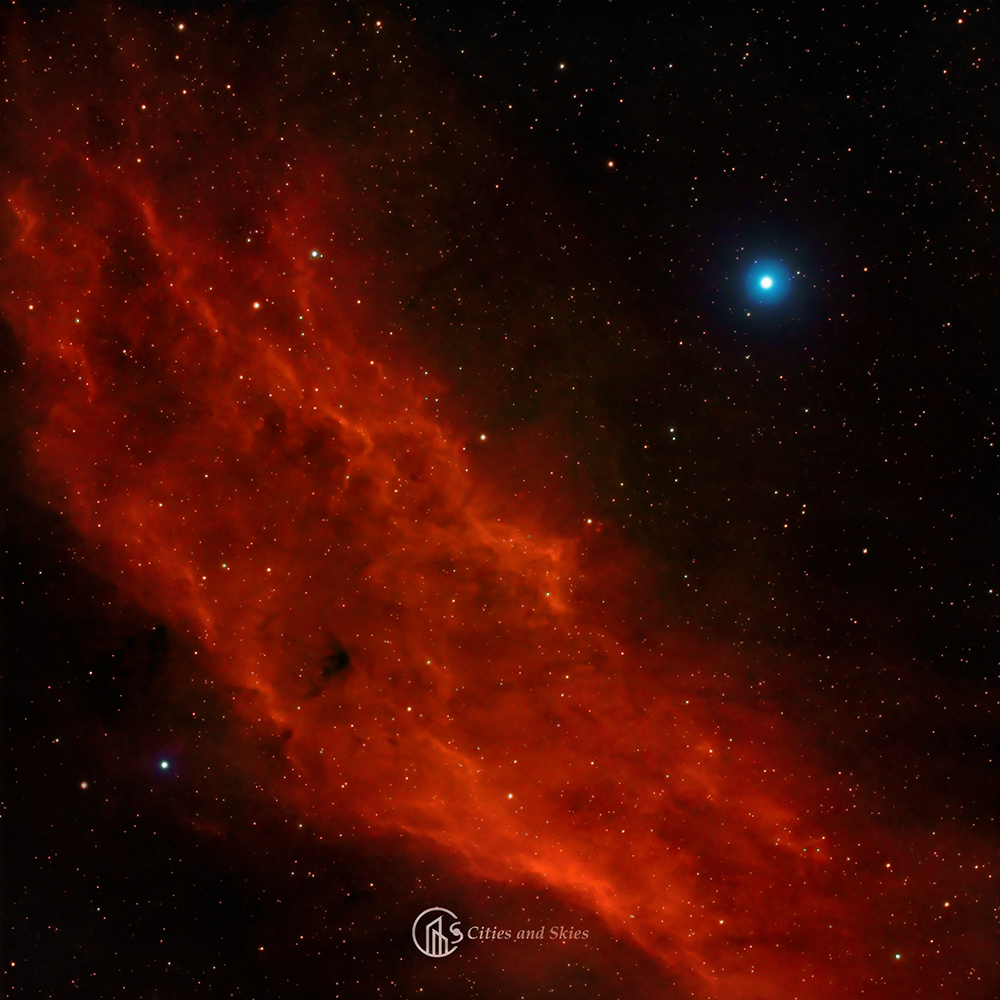Some like it hot! The most massive stars have very high surface temperatures, and they can even make the surrounding interstellar gas glow. Stars can be classified by their brightness and color (an astronomer would say: spectral type). Brightness and color is related to other physical parameters like mass, size, and surface temperature, and one can use a combination of these parameters to follow the evolution of stars as they age. They form various branches on brightness-color diagrams based on their evolutionary state, like main sequence, giants, supergiants etc. The hottest stars in the main sequence are those with spectral type O. They are extremely bright, but they are the rarest, too!
Where are the brightest stars?
The brightest O stars shine some ten thousand more in visible light than our Sun. If we count ultraviolet light and other parts of the spectrum, it is up to some hundred thousand Solar brightness! Still, very few of the hottest stars are visible to the naked eye. Firstly, because they mainly emit in the ultraviolet part of the spectrum – which has a great ionizing power to make the nebulas glow. Secondly, because there are very few of them (compared to other types) in the Milky Way galaxy, and we do not have any nearby. Among the 100 or so brightest naked eye stars we only have four O-types. These are gamma Velorum (Regor), two stars on Orion’s Belt (Alnitak and Mintaka), and zeta Puppis (Naos). Never heard of them? No wonder. They are all further than 800 light years from us.
Menkib and the California Nebula
Another example you may have come across on these pages though, AE Aurigae, or the Flaming Star. Even more famous in astrophoto circles is the California Nebula, ionized by one of the hottest stars visible to the naked eye: Xi Persei, or Menkib (top right in the picture). Menkib would weigh about 30 Suns on a cosmic scale, and it is more than six times hotter as well. All this means that the star is using its fuel at a very high rate, and will not live very long (just like all others in this class). If we would wait a few million years, we could see it go supernova, leaving a stellar-mass black hole or a neutron star behind. Luckily for us, Menkib is still around and produces a spectacular show.
Disclaimer:
To us, the nebula is more reminiscent of a B2 bomber, or a glider. With that said, here are some links to read about the brightest stars and the various types of stars (a great collection by an astrophotographer).
And as the last fun fact, Menkib is part of an asterism and is called 卷舌三 in Chinese. An asterism is a group of stars recognized in some (sub-)cultures. This asterism is called the “Rolled Tongue”, Menkib is the star in its middle. Those who can actually roll their tongues (or even better, can stick it in their nose), may appreciate this. Even an astronomer can learn new things every day – thanks Wikipedia!
Observing log
Finished with Psyche & Sapientia around 21:30 CET on both nights, replaced the filter, refocused, and moved to the California nebula at around 22:00 CET on both nights. Positioning/framing took some time as the nebula does not fit in our FoV. Used the GoTo feature of CEM40 to Menkib, then used the ASIAir control to refine the position. Shooting went quite well but both nights some clouds or fog arrived after midnight; the neighbor’s house was getting in the way, too (this was all done in the back garden, not on the street front).
Menkib and the California Nebula (NGC 1499), 4.5h
Hoogeveen, Netherlands
24-25 Feb. 2021, 26 frames (selected from 30x300s shots) with gain 240; high altitude clouds moving in
27-28 Feb. 2021, 28x300s frames with gain 240; close to Full Moon
William Optics GT81, f/5.9
Flattener 6AIII 0.8x
ZWO ASI533MC-P, gain 240, -20 deg.
WO Uniguide 50/200 with ASI120MMmini
iOptron CEM40
Optolong L-eXtreme
ASIair
Bortle~5 (our region; in the town, it should be worse)
Stacked in Astro Pixel Processor in 32-bit mode, which gives more color.
Then moved to 16-bit mode and done the rest in Photoshop.
